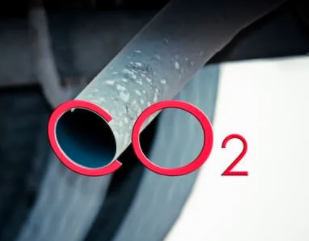There’s no denying that Covid-19 has been tough on companies with fleets, especially those sharing direct contact with customers. While maintaining hygiene in the workplace is an important part of a fleet manager’s job, drivers and vehicles facing the public have a higher risk of spreading the virus.
The pandemic has, no doubt, changed the way we do business. It can be overwhelming to know where to start with safeguarding your fleet.
However, a fleet hygiene checklist is a great way to stay on top of vehicle sanitisation. This article will show you how to implement a fleet hygiene checklist with these handy tips, so you can keep your drivers and customers safe.
Read more: How To Have Happy Drivers In Your Company
Fleet Hygiene Checklist for Safety in the Workplace

A fleet hygiene checklist is a list of preventative actions that help fleet managers cover their bases with sanitation procedures. As an employer, you have a duty to protect people from harm. And at the end of the day, these procedures help you protect both your business and community.
Having a fleet hygiene checklist makes it easy to ensure nothing slips between the cracks.
Digitalising fleets can save businesses up to 20%. Discover how much you could save today, with our ROI Calculator.
What should be on your Fleet Hygiene Checklist?
You can customise this list to suit your business, but the essential considerations for any fleet are:

1. Maintain Sanitation Supplies
First things first, ensure that essential hygiene products are well-stocked in each of your vehicles.
These include:
- Hand sanitiser
- Disinfectant wipes
- Antiviral disinfectant spray and paper towels
- Disposable masks and gloves, and any other personal protective equipment recommended for your industry
- Handheld vacuum to clean debris from vehicle interiors
2. Monitor Vehicle Use
Vehicles should be thoroughly sanitised between each trip, or at the very minimum, once daily.
Consistency is key: establish a sanitation routine, and stay on track by monitoring incoming and outgoing vehicles.
With a busy fleet, it can be tough to keep on top of vehicle activity. However, GPS van tracking systems like Vimcar’s Fleet Geo give you the tools to do this automatically.
3. Automated Monitoring
Vimcar’s Fleet Geo tracks your vehicles in real-time, and notifies you of incoming and outgoing vehicles with its geofencing feature. Geofences are digital barriers that alert you when a vehicle crosses the boundary of your choosing.
Simply set a geofence around your company car park, and receive a notification when a vehicle returns and is ready for sanitisation.

4. Thoroughly Sanitise Vehicles
Of course, thorough sanitation is a key part of preventing Covid and maintaining hygiene in the workplace. Train your staff on how to properly sanitise vehicles between deliveries, and keep a checklist of the sanitation steps on hand.
Vehicles should be sprayed with anti-viral disinfectant, with special attention paid to high-touch surfaces including:
- Interior and exterior door handles
- Steering wheel & dashboard
- Rearview mirror & sun visor
- Centre console & glove department
- Seatbelts
- Fuel cap
- Gear shifts
5. Maintain Social Distancing
Set yourself up for success with a workflow that allows for 2 metres of social distancing between staff. Consider having one worker at a time load and unload vehicles to limit the handling of goods. Make it easy for to social distance by introducing a one-way system with signs.
Read more: Optimise Your Fleet From Home With A Vehicle Management System
Social distancing can be tricky for businesses with vans coming in and out of loading docks. Nevertheless, Fleet Geo takes the guesswork out of social distancing and enforcing safety in the workplace.
For example, when your geofence notifies you that a driver is returning to the lot, you are prompted to vacate the area.
Just by knowing where your drivers are and how many are returning back to the office or warehouse can make a huge difference.
6. Check-in with Drivers
One of the most important things you can do for safety in the workplace is regularly check-in with your drivers to see if they have Covid symptoms. Make sure your staff is kept up to date with expectations for hygiene in the workplace, and ensure anyone showing symptoms is self-isolating.
Remember, your drivers are the experts on their routes. Don’t be afraid to ask them about potential hygiene gaps they notice in their daily workflow and make changes accordingly.

7. Communicate with Clients
If your drivers meet face-to-face with clients, ask customers to wear face masks ahead of time. Don’t forget to let clients know about the measures you are taking to maintain hygiene in the workplace.
Communicating with clients helps keep both of you safe, and builds customer trust.
Covid, Fleet Hygiene, & You
A fleet hygiene checklist goes a long way in maintaining safety in the workplace and preventing the spread of Covid. Maintaining proper supplies, monitoring vehicle activity, communicating with drivers and customers, and sanitising properly are musts.
It’s easy to slip up on sanitisation between trips if you aren’t monitoring incoming and outgoing vehicles. Do yourself a favour, and make it automatic with a digital fleet management system like Fleet Geo.
With something as important as safety in the workplace, fleet managers can’t afford to drop the ball on hygiene. To learn more about how Vimcar’s fleet management software can help you maintain hygiene in the workplace – not to mention cut costs, save time, and keep your fleet secure.






